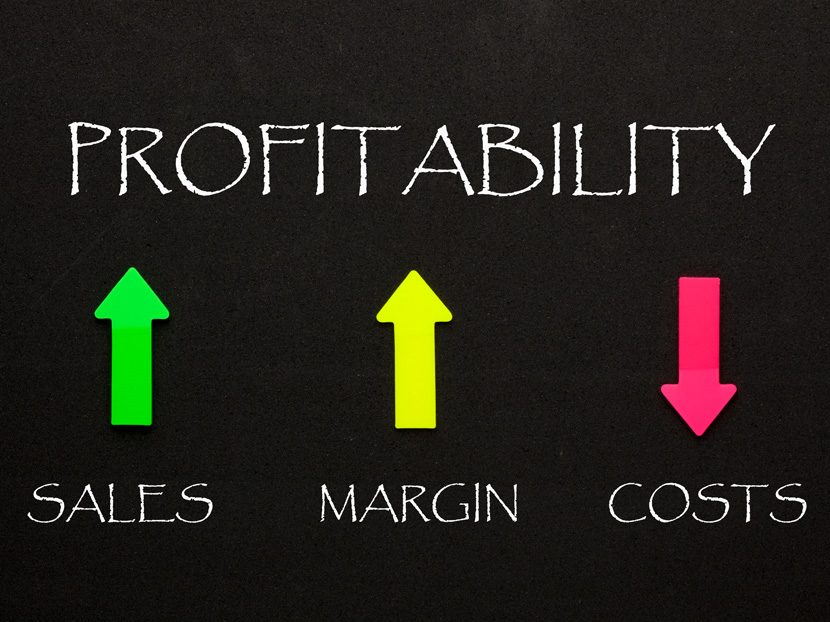Choose Your Profit Margin Wisely
Ten vital factors to consider will help you decide on the correct margin for your business.

As in sports, when you enter the business arena you must be properly equipped mentally and physically. Obviously, a tennis player would never play football against 300-pound players decked out in their pads and helmets while he only had his tennis shorts, shirt and sneakers on, and, his tennis racket in his hand.
The first thing you need to know in business is your true operational cost. After all, the goal of all for-profit businesses is making a profit. If you don’t know your true cost, you cannot know whether your selling prices are properly and profitably calculated. This brings up the second most important issue – choosing your profit margin.
A profit margin is the amount of the selling price that you get to keep (before taxes). To arrive at a proper profit margin, you must first choose the percentage that will also take into consideration the effects of "Murphy's Law" (anything that can happen, will happen) upon your choice. Subtract that percentage from 100. Next, divide your real cost by the difference (profit margin divisor).
This is not to be confused with a markup of cost, which is a percentage by which you increase your cost. With this method, you multiply your real cost by a chosen percentage. Then, you add the number you come up with to your real cost.
Each method will give you a different number. The following examples (Figures 1 & 2) show the difference between methods when the real cost is $100 and the chosen percentage is 25. As you can see, the 25 percent produces $8.33 more when the Profit Margin Method is used.

Important Factors
Before choosing your profit margin, however, you must consider 10 factors.
- Factor 1: By using the maximum possible hours available to calculate your operational cost per hour, you have found the real cost per hour as long as you sell all hours.
- Factor 2: Slow times do occur and once an hour is gone, it's gone forever. You will probably never sell all your available hours all the time.
- Factor 3: Let's put aside the possibility that you may have a lower number of hours because your firm gives its employees more vacation and holiday time. If you lower the number of hours to arrive at your cost per hour, your cost per hour will rise.
Additionally, the more you lower the number of available hours, the more susceptible you become to the argument that the reason your available hours are low is because your prices are too high. That is something no one will be able to allege if you use the maximum possible hours.
- Factor 4: By using the maximum possible hours available to calculate your operational cost per hour, your risk is increased.
Aligning Risk and Reward
- Factor 5: When risk increases, reward must increase to compensate.
Example: If your labor/overhead cost per technician hour was $100 (based on 1,708 hours per year) your cost for one technician for the year would be $170,800. The following chart (Figures 3) shows the result of a 10 percent profit margin when different levels of hours are sold.

As you can see, the only time the desired 10 percent profit margin is attained is when all hours are sold. If you lose half an hour a day on average the profit margin drops to 3.08 percent. It becomes a minus 5 percent, if you lose one hour a day per technician on average.
What do you do? As an example, if your average productivity were only 5½ hours per technician day (1,342 hours annually), to get the $18,975.88 of profit that reflects a 10 percent profit margin, if all 1,708 available hours were sold, you would have to use a 29.29 percent profit margin. That's almost three times your percentage goal.
Based on the same cost of $100 per hour, a selling price of $111.11 per hour and the sale of 1,342 hours, you would bring in $149,109.62. That's a loss of $21,690.80! By dividing the $100 per hour cost by 70.71 percent (the difference between 100 percent and the 29.29 percent), your selling price per hour would be $141.42. If you only sold 1,342 hours, you would bring in $189,785.64. After subtracting your cost of $170,800, you would have $18,985.64 remaining. That means under those circumstances, you would have to choose a 30 percent (rounded) profit margin in order to earn the amount of dollars you would have realized if all hours were sold using a 10 percent profit margin.
- Factor 6: When tasks for the consumer are performed in an excellent manner, the consumer receives value for the dollars they spend.
When consumers receive value for their dollars, contractors should receive the rewards they deserve for the value they deliver and the risks they take in the delivery. As value increases so should reward.
Example (Figures 4): Let's look at the effects of different profit margins on the selling prices of a technician hour, and, the rewards attached if your labor/overhead cost per technician hour was $100, and, you sold all 1,708 hours.

As you can see, the contractor with the 10 percent profit margin must produce over seven times that which the contractor with the 45 percent profit margin must produce to arrive atthe same amount of profit dollars.
Keep in mind that aside from taxes, you only get to keep the amount of money left after all expenses have been paid. This means the contractor using the 10 percent profit margin must expend over seven times the cost to attain that same amount of money. That meansmore technicians that can be hard to find. Especially, if you do the right thing and only hire good technicians. If your hiring criterion is anyone breathing who can hold a wrench, inaddition to increasing your costs, you will lower your value to the consumer and increase your own stress levels.
If the 10 percent profit margin contractor thinks the 45 percent profit margin contractorwon't have much work, he/she must first realize that the 45 percent profit margin contractor only needs 61.12 percent of the work the 10 percent contractor needs to accomplish the same goal.
The following comparison (Figures 5 & 6) emphasizes the reasons you would rather be Mr. 45 percent rather than Mr. 10 percent.

Factor 7: You must decide whether you want to work harder or smarter.
- Factor 8: After you calculate your cost, it is your job to maximize your profit.
- Factor 9: Profit is the one and only reason business exists.
No one in their right mind would take on the costs and liabilities businesses incur when offering their products and/or services to the public, for no gain or a loss. Everything other than profit is cost. You must pay the cost you incur. You only get to keep the profit.
- Factor 10: If you intend to give discounts for senior citizens, service agreement clientele, etc., you must consider the discount before choosing your profit margin.
If you use a 10 percent profit margin and offer a 10 percent discount, you can only recover your cost. You cannot make a profit. But, if you offer a 15 percent discount when you only have applied a 10 percent profit margin, not only do you not make a profit – you do not recover all your costs to perform the task.
The aforementioned information is an excerpt from my book Solutions Management Theories and Methods for The Contracting Business. I sincerely hope this information helps you in choosing the profit margin that can get you where you want to go. If you need my assistance, give me a call.





